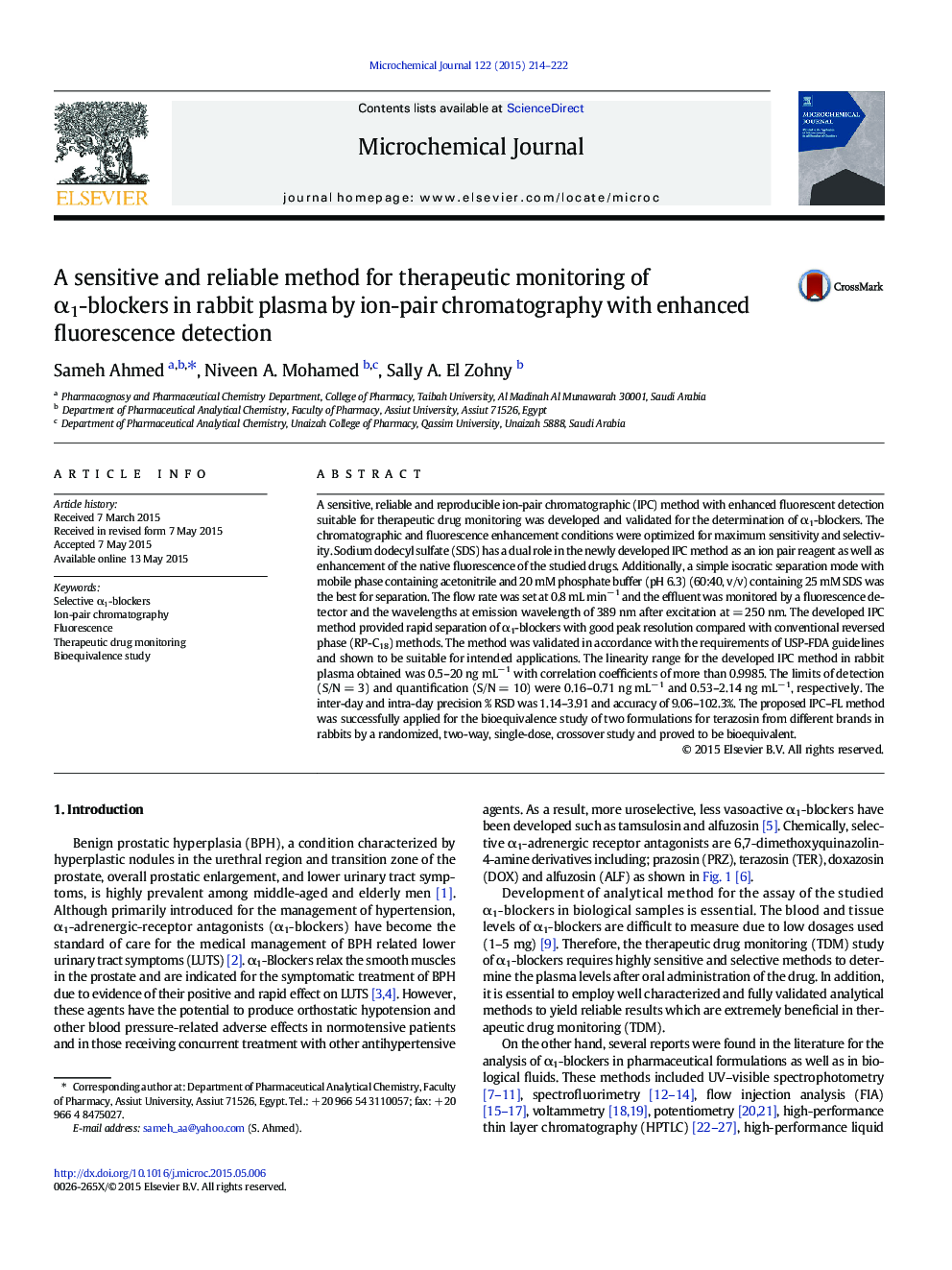| Article ID | Journal | Published Year | Pages | File Type |
|---|---|---|---|---|
| 1227781 | Microchemical Journal | 2015 | 9 Pages |
Abstract
A sensitive, reliable and reproducible ion-pair chromatographic (IPC) method with enhanced fluorescent detection suitable for therapeutic drug monitoring was developed and validated for the determination of α1-blockers. The chromatographic and fluorescence enhancement conditions were optimized for maximum sensitivity and selectivity. Sodium dodecyl sulfate (SDS) has a dual role in the newly developed IPC method as an ion pair reagent as well as enhancement of the native fluorescence of the studied drugs. Additionally, a simple isocratic separation mode with mobile phase containing acetonitrile and 20 mM phosphate buffer (pH 6.3) (60:40, v/v) containing 25 mM SDS was the best for separation. The flow rate was set at 0.8 mL minâ 1 and the effluent was monitored by a fluorescence detector and the wavelengths at emission wavelength of 389 nm after excitation at = 250 nm. The developed IPC method provided rapid separation of α1-blockers with good peak resolution compared with conventional reversed phase (RP-C18) methods. The method was validated in accordance with the requirements of USP-FDA guidelines and shown to be suitable for intended applications. The linearity range for the developed IPC method in rabbit plasma obtained was 0.5-20 ng mLâ 1 with correlation coefficients of more than 0.9985. The limits of detection (S/N = 3) and quantification (S/N = 10) were 0.16-0.71 ng mLâ 1 and 0.53-2.14 ng mLâ 1, respectively. The inter-day and intra-day precision % RSD was 1.14-3.91 and accuracy of 9.06-102.3%. The proposed IPC-FL method was successfully applied for the bioequivalence study of two formulations for terazosin from different brands in rabbits by a randomized, two-way, single-dose, crossover study and proved to be bioequivalent.
Related Topics
Physical Sciences and Engineering
Chemistry
Analytical Chemistry
Authors
Sameh Ahmed, Niveen A. Mohamed, Sally A. El Zohny,
